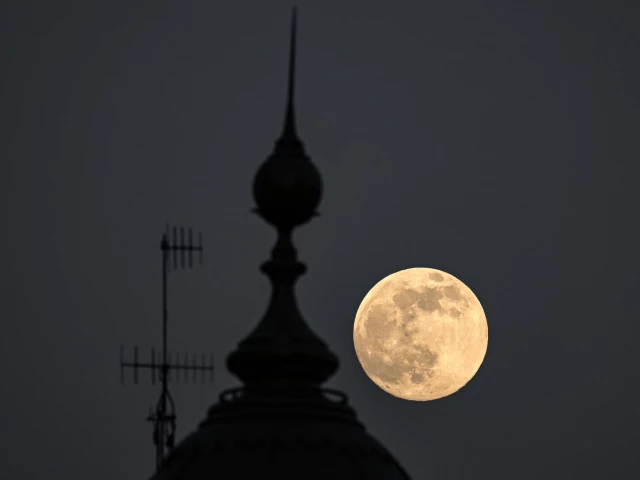The phenomenon is notable for its extraordinary increase in size and brightness compared to an ordinary full moon.
The supermoon known as the Beaver Moon is seen behind an office building in Mexico City on November 4, 2025. PHOTO: AFP
Sky watchers across Pakistan can enjoy stunning views of the year’s largest super moon, known as the ‘Super Beaver Moon’, as this celestial event lights up the night sky with exceptional brilliance.
According to a spokesperson for the Space and Upper Atmosphere Research Commission (SUPARCO), this is the second of three supermoons to appear this year. The phenomenon is notable for its extraordinary increase in size and brightness compared to an ordinary full moon.
A supermoon occurs when the Moon, during its full phase, reaches the closest point to Earth in its orbit. As a result, it appears larger and significantly brighter than usual.
The spokesperson said that during the supermoon, the distance between Earth and the Moon narrows to about 221,817 miles, making the Moon appear up to 9.7% larger and 16% brighter than average.
The second #supermoon of 2025 was photographed around the world on Tuesday evening and Wednesday morning. THE #supermoon in November is known as the Beaver Moon and is one of the largest and brightest full moons of the year. (Photos via VCG) pic.twitter.com/OyIW3qaCrz
– CGTN (@CGTNOfficial) November 5, 2025
Experts note that this is the second supermoon of the year, with the next and final expected in December. Astronomers have also identified this event as the “Super Beaver Moon”, which is expected to be the largest and brightest lunar display of 2025.
Earlier on October 7, tThe first supermoon of 2025 lit up Pakistan’s night sky.
Perigee – the Moon’s closest approach to Earth – occurred at 7:00 p.m. Coordinated Universal Time on October 6, which is equivalent to 12:00 a.m. PST on October 7. The SUPARCO official added that the full moon phase occurred at 8:47 p.m. PST, and since the two events occurred within hours of each other, “this qualifies as a supermoon.”
Normally, a supermoon appears up to 14% larger and almost 30% brighter than a typical full moon.




